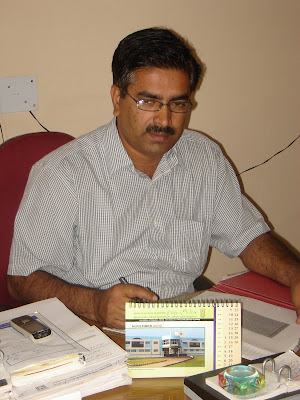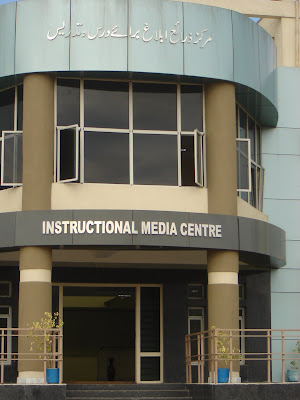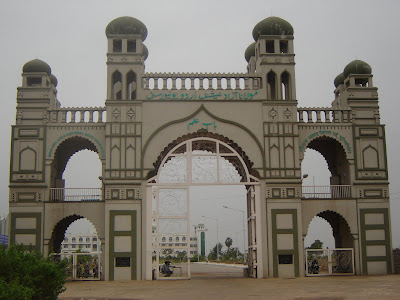By Yoginder Sikand, TwoCircles.net,
Set up in 2004, the School of Journalism and Mass Communications at the Maulana Azad National Urdu University (MANUU), Hyderabad, is the only institution in India to provide a Master’s degree programme in Urdu journalism. Housed in a spacious, brand new building, the School has three Lecturers, a Reader and thirty seven students on its rolls.

Ehtesham Ahmad Khan, Director of the school
Ehtesham Ahmad Khan, Director of the School, explains that the primary purpose of the School is to train qualified journalists for the Urdu print and electronic media so as to make these more professional. ‘We also want to encourage students from Urdu-medium backgrounds to try to get jobs in the mainstream English or regional language media, which require multilingual professionals and who generally pay better than their Urdu counterparts’, he adds.
The School’s rigorous course of study introduces would-be Urdu media professionals to various technical, artistic and other aspects of modern journalism that Khan says are generally lacking in the existing Urdu media. Fees for the two year course have been deliberately kept modest—Rs. 11,000—being halved last year so as to enable students from economically less well-off families to also apply. In addition, the School provides every student a monthly scholarship of Rs.1000.

‘A major problem we face is the lack of sufficient textbooks on journalism and the mass media in Urdu’, says Khan. In association with the MAANU’s Translation Department, the School plans to begin work on translating necessary texts from English into Urdu. It also plans to launch post-graduate diploma courses in non-linear editing and graphics and animation.
In addition to their regular course work, students of the School are provided practical exposure to hone their media skills. The School brings out an in-house Urdu journal, Izhaar, designed and produced entirely by the students themselves. They are taken regularly to the studios of a private television channel in Hyderabad, where they learn to make television programmes. They also receive hands-on training at Hyderabad offices of the All-India Radio. So far, students have produced over a hundred television and radio documentaries, some of which have also been telecasted.

Work is in progress to establish a state-of-the-art studio in MANNU’s Instructional Media Centre (‘Markaz Zara-e Iblagh Bara-e Dars-o Tadris’). This would be equipped with sophisticated equipment, and would be used, among other purposes, for students’ in-house training. The estimated budget of this project is more than eight crore rupees. At present, the Media Centre produces audio and video programmes in Urdu for MANUU’s various on-going distance-learning courses which are relayed through Doordarshan’s Urdu channel, and are also beamed to MANUU’s study centres located across the country. Once the Media Centre’s studio is fully functional, students of the School will assist its staff in developing these programmes, as well as helping in the Media Centre’s proposed Internet Protocol television and radio programmes, and community radio and e-classroom projects.
The School regularly holds talks and seminars on media-related issues. It has invited numerous social activists and leading Urdu, English and Hindi media professionals to deliver lectures, and has also organized two seminars, both on the role of women in the media. Furthermore, from this year onwards, a month’s internship has been made compulsory for students, who can choose to spend this time in media houses, Urdu or otherwise, anywhere in the country.

The School’s students come from various parts of India, and several of them are graduates of madrasas whose degrees are recognized by MANUU. Others are from Urdu-medium schools. However, just around a tenth of them are girls. In order to make the School more attractive to potential students it has relaxed the condition that potential students must have formally studied Urdu as a subject in a school or madrasa. It now welcomes applications from graduates who know how to read and write Urdu. At present, the School has 31 seats in each batch, and entrance examinations are held every year in Delhi and Hyderabad.
So far three batches of students—a total of thirty-four students—have finished the School’s two year programme and are employed in various Urdu newspapers, magazines and television channels across the country.
‘I think the School has great potential to bring about much-needed changes in the Urdu media and also to play a major role in promoting social awareness and reforms among Urdu-speakers’, opines Khan optimistically.
___________________________________________________________________________________________________________
For information about the School, contact its Director, Ehtisham Ahmad Khan on [email protected]
For more details, see
http://manuu.ac.in/MassComm&Journalism.html

